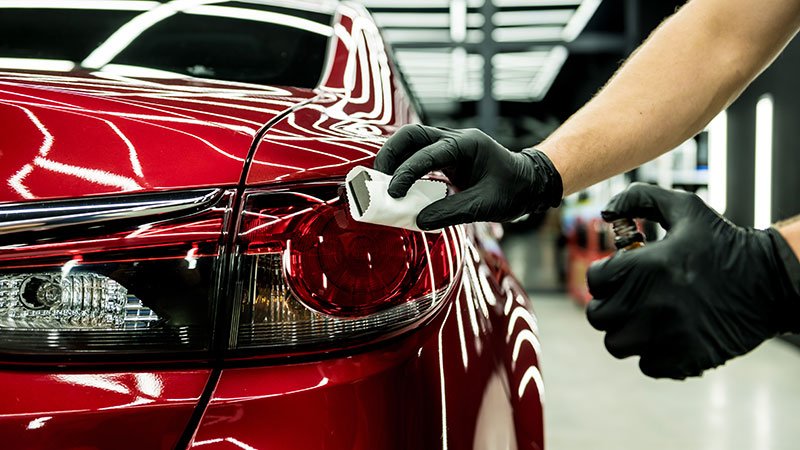Experience top-rated auto detailing for scratch removal.
Experience top-rated auto detailing for scratch removal.
Blog Article
A Comprehensive Overview to the Kinds Of Ceramic Finish on the Market
Ceramic coatings have arised as a pivotal solution across different sectors due to their one-of-a-kind properties and applications. As we explore the distinct qualities and applications of these finishes, the effects for efficiency and longevity become progressively obvious, elevating inquiries about which kind might best suit your needs.
Understanding Ceramic Coatings
Ceramic coatings are sophisticated safety options that have actually gotten appeal in different markets, particularly in automotive and aerospace applications. These layers are composed of a fluid polymer that, when healed, develops a long lasting, hydrophobic layer externally of the substratum. This layer supplies improved resistance to environmental impurities, UV radiation, and chemical direct exposure, therefore extending the life and aesthetic appeal of the underlying material.
The essential element of ceramic coatings is silica, which adds to their solidity and longevity. The application procedure commonly entails surface preparation, application of the finishing, and curing, which can be accomplished with heat or UV light. As soon as healed, ceramic layers show phenomenal bonding homes, permitting them to adhere strongly to a range of surfaces, including metals, plastics, and glass.
In enhancement to their protective attributes, ceramic finishes also offer convenience of maintenance. Their hydrophobic nature lowers the adherence of dirt and gunk, making cleaning less complex and less constant. In general, the adoption of ceramic finishings represents a substantial development in surface area security modern technology, giving both functional and visual benefits across several fields.
Types of Ceramic Coatings
Numerous sorts of ceramic coatings are readily available, each made to satisfy details performance demands and applications - Auto Detailing. One of the most typical kinds consist of:
Silica-based Coatings: These coatings primarily consist of silicon dioxide and are understood for their resilience and chemical resistance. They are commonly made use of in automotive and industrial applications.
Titanium Dioxide Coatings: Prominent for their photocatalytic buildings, titanium dioxide coatings are commonly used in environments where self-cleaning and antifungal properties are desirable, such as in structure products and automotive finishes.
Zirconia Coatings: Identified by their high-temperature security and thermal resistance, zirconia layers are used in applications such as wind turbine engines and high-performance automotive parts.
Alumina Coatings: Displaying outstanding solidity and thermal stability, alumina finishings are regularly utilized in wear-resistant applications, consisting of reducing tools and commercial machinery. - Car Detailing
Hybrid Coatings: Combining the homes of various products, hybrid coatings supply boosted efficiency attributes, making them ideal for distinct and requiring applications.
Each type of ceramic finishing serves distinct purposes, allowing users to select one of the most proper service based on particular environmental problems and efficiency requirements.
Benefits of Ceramic Coatings
Ceramic finishings, in particular, deal many advantages that make them increasingly popular among manufacturers and customers alike. These coverings are immune to scratches, chemicals, and UV rays, ensuring that the underlying surface stays protected over time.
Along with toughness, ceramic finishes give outstanding hydrophobic buildings, permitting simple cleansing and maintenance. This water-repellent nature decreases the adherence of dirt, grime, and various other contaminants, which can lengthen the visual appeal and capability of the surface area. Ceramic coverings can considerably improve thermal resistance, making them excellent for applications that endure high temperatures.

Application Refine
When applying ceramic layers, a precise method is important to accomplish ideal outcomes. The application procedure typically begins with thorough surface area preparation. This includes washing, decontaminating, and brightening the surface to eliminate all contaminations, consisting of dirt, grease, and prior waxes or sealants. A tidy surface makes sure proper adhesion of the covering.
When the surface area is prepped, the following step is to use the ceramic layer. The layer must be used in thin layers, as thicker applications can lead to unequal surfaces.
After application, the finish needs a details treating time, generally ranging from a few hours to a complete day, relying on the product. Throughout this time, it is vital to prevent direct exposure to moisture or contaminants. A gentle buffing might be necessary after curing to improve the gloss and get rid of any kind of high spots. Complying with these steps vigilantly will take full advantage of the performance and longevity of the ceramic coating, giving a resilient safety layer for the surface.
Maintenance and Longevity
To make sure the longevity and performance of a ceramic finishing, regular upkeep is vital. Ceramic layers, understood for their toughness and protective qualities, require specific treatment regimens to maximize their life expectancy and efficiency.
Along with regular cleaning, periodic evaluations are critical. Look for indicators of wear or damages, such as hydrophobic buildings decreasing or surface area blemishes. If necessary, a light gloss may be used to invigorate the finish without removing it away.
Moreover, the application of a booster spray can enhance the finish's hydrophobic results and restore its gloss. This is particularly useful for coverings navigate to this site that have actually been in usage for an extensive duration. Ultimately, by adhering to these upkeep practices, one can substantially prolong the life of a ceramic layer, ensuring that it continues to offer optimum protection against environmental elements visit the site and preserve the visual allure of the vehicle.
Conclusion

Report this page